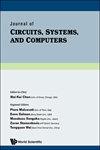Design and Implementation of a Dynamic Tracking System for Drones in Modern Medical Treatment Applications
IF 1
4区 工程技术
Q4 COMPUTER SCIENCE, HARDWARE & ARCHITECTURE
引用次数: 0
Abstract
The utilization of unmanned aerial vehicles (UAVs) equipped with advanced machine vision and remote sensing technology has ushered in a transformative era across diverse domains such as agriculture, construction, energy, environmental monitoring, and contemporary medical treatment. Particularly within the realm of modern medical treatment, the integration of drone technology into healthcare service delivery has displayed tremendous promise for enhancing patient outcomes, particularly in geographically challenging areas or during emergent situations. Quad-rotor UAVs have emerged as prominent contenders owing to their exceptional performance, user-friendly controls, and adaptable functionality. Their quad-rotor configuration enables seamless vertical takeoff and landing, rendering them highly suitable for deployment in demanding environments frequently encountered in the context of modern medical treatment. When combined with cutting-edge machine vision and remote sensing capabilities, quad-rotors exhibit proficiency in executing intricate missions encompassing medical supply delivery, mobile target tracking, anomaly detection, topographical mapping, and even facilitating emergency medical response scenarios. These remarkable capabilities render quad-rotors indispensable tools for healthcare professionals including doctors, nurses, and other dedicated personnel in the provision of high-quality healthcare services within the realm of modern medical treatment. The design and implementation of a dynamic tracking system predicated on machine vision and remote sensing technology assume paramount importance in ensuring optimal UAV operations in modern medical treatment applications. A meticulously crafted system should possess the capacity to process visual information through sophisticated machine vision algorithms, thereby transforming it into precise control data for the UAV. Employing a remote sensing target detection model serves to accurately locate and identify pertinent information embedded within optical remote sensing imagery, thereby generating a comprehensive output feature map information set. Integration of this information with the cascade PID (Proportion Integral Differential) control algorithm facilitates the realization of a dynamic tracking system tailored specifically for quad-rotor UAVs. Through meticulous experimentation, the system can be effectively harnessed for portable high-altitude visual detection, thereby endowing healthcare services with promptness and efficiency. For instance, the system can be leveraged to meticulously track the movement of medical supplies during transportation, remotely monitor patients’ vital signs, and even facilitate the expeditious delivery of essential medications or vaccines to individuals situated in remote and inaccessible locations during modern medical treatment. As the demand for healthcare services continues to surge, the prevalence of drones equipped with state-of-the-art machine vision and remote sensing technology within modern medical treatment contexts is expected to increase manifold. Consequently, sustained research and development endeavors dedicated to advancing this technology assume paramount significance, thereby ensuring its seamless and efficacious implementation within the modern medical treatment field.现代医疗应用中无人机动态跟踪系统的设计与实现
配备先进机器视觉和遥感技术的无人机的使用开创了一个跨越农业、建筑、能源、环境监测和现代医疗等不同领域的变革时代。特别是在现代医疗领域,将无人机技术集成到医疗服务中,在提高患者疗效方面显示出巨大的前景,特别是在地理位置具有挑战性的地区或紧急情况下。四旋翼无人机因其卓越的性能、用户友好的控制和适应性强的功能而成为突出的竞争者。它们的四旋翼配置能够实现无缝垂直起飞和降落,非常适合在现代医疗中经常遇到的苛刻环境中部署。当与尖端的机器视觉和遥感能力相结合时,四旋翼机能够熟练执行复杂的任务,包括医疗供应交付、移动目标跟踪、异常检测、地形测绘,甚至为紧急医疗响应场景提供便利。这些卓越的能力使四旋翼成为医疗专业人员不可或缺的工具,包括医生、护士和其他专职人员,在现代医疗领域提供高质量的医疗服务。基于机器视觉和遥感技术的动态跟踪系统的设计和实现对于确保无人机在现代医疗应用中的最佳操作至关重要。一个精心制作的系统应该能够通过复杂的机器视觉算法处理视觉信息,从而将其转化为无人机的精确控制数据。采用遥感目标检测模型有助于准确定位和识别嵌入光学遥感图像中的相关信息,从而生成综合输出特征图信息集。将这些信息与级联PID(比例积分微分)控制算法相结合,有助于实现专门为四旋翼无人机量身定制的动态跟踪系统。通过细致的实验,该系统可以有效地用于便携式高空视觉检测,从而使医疗服务具有及时性和效率。例如,该系统可以用来仔细跟踪运输过程中医疗用品的移动,远程监测患者的生命体征,甚至有助于在现代医疗过程中迅速向偏远和人迹罕至的个人提供基本药物或疫苗。随着对医疗服务的需求持续激增,在现代医疗环境中,配备最先进机器视觉和遥感技术的无人机的普及率预计将成倍增加。因此,致力于推进这项技术的持续研发具有至关重要的意义,从而确保其在现代医疗领域的无缝有效实施。
本文章由计算机程序翻译,如有差异,请以英文原文为准。
求助全文
约1分钟内获得全文
求助全文
来源期刊

Journal of Circuits Systems and Computers
工程技术-工程:电子与电气
CiteScore
2.80
自引率
26.70%
发文量
350
审稿时长
5.4 months
期刊介绍:
Journal of Circuits, Systems, and Computers covers a wide scope, ranging from mathematical foundations to practical engineering design in the general areas of circuits, systems, and computers with focus on their circuit aspects. Although primary emphasis will be on research papers, survey, expository and tutorial papers are also welcome. The journal consists of two sections:
Papers - Contributions in this section may be of a research or tutorial nature. Research papers must be original and must not duplicate descriptions or derivations available elsewhere. The author should limit paper length whenever this can be done without impairing quality.
Letters - This section provides a vehicle for speedy publication of new results and information of current interest in circuits, systems, and computers. Focus will be directed to practical design- and applications-oriented contributions, but publication in this section will not be restricted to this material. These letters are to concentrate on reporting the results obtained, their significance and the conclusions, while including only the minimum of supporting details required to understand the contribution. Publication of a manuscript in this manner does not preclude a later publication with a fully developed version.
 求助内容:
求助内容: 应助结果提醒方式:
应助结果提醒方式:


